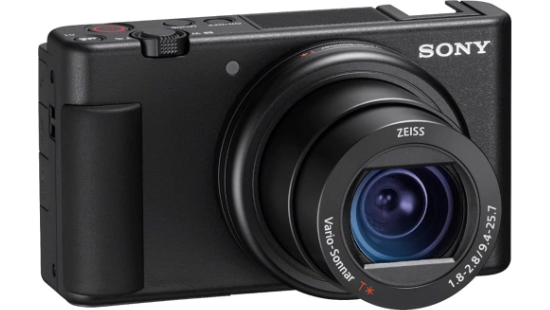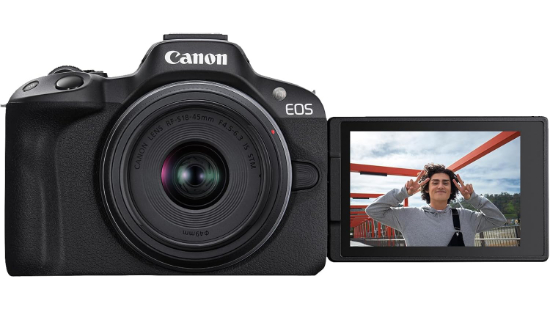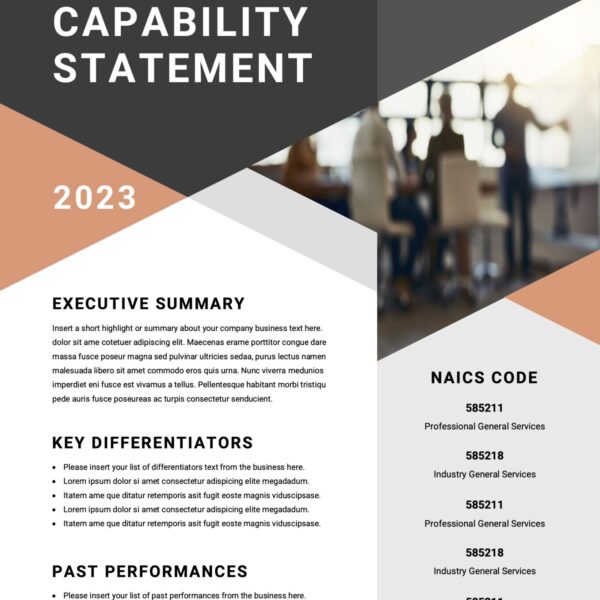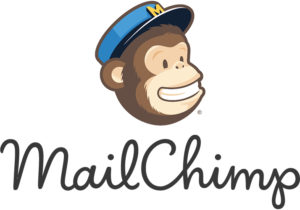
All Posts, Marketing, Web Design
You’ve built a solid website. It looks sharp. The content is great. But there’s one problem—your traffic isn’t growing. Here’s the thing, getting traffic isn’t just about publishing content and crossing your fingers. It’s about knowing what’s working, what’s not, and where the opportunities are hiding.
Enter Ahrefs. You’ve probably heard of it—one of the biggest names in SEO. But what you might not know is that Ahrefs offers a suite of free tools that can give you actionable insights and help you drive traffic without spending a penny. Let’s break it down.
Why Ahrefs? And Why Free?
Ahrefs is like the Swiss Army knife of SEO. You can track backlinks, analyze keywords, and monitor what your competitors are doing. Essentially, all the things that make Google sit up and take notice. Here’s the good news; you don’t need a premium subscription to start making progress. Ahrefs’ Free Tools give you just enough firepower to make smarter decisions and build a traffic-generating machine. If you’ve been wondering whether free tools can really move the needle, here’s a tip: they absolutely can, but only if you use them consistently and strategically. At Design Theory, we’ve seen firsthand how small, focused efforts can add up to big wins when you know where to look.
Step 1: Start with Ahrefs Webmaster Tools (AWT)
Let’s kick things off with the foundation—Ahrefs Webmaster Tools (AWT). Think of this as Google Search Console’s more insightful cousin. It does everything GSC does, but with a sharper eye for SEO opportunities.
How to Set It Up:
- Go to Ahrefs Webmaster Tools
- Sign up for a free account and connect your website
- Verify your site ownership using DNS, HTML, or Google Search Console
Once you’re in, you’ll get access to critical data on:
Site Health: Identify technical SEO issues that might be holding back your rankings.
Backlinks: See who’s linking to you and which pages are driving the most authority.
Keyword Rankings: Find out where you’re showing up in search results, and where you’re not.
Our Theory: Set up AWT as soon as possible and schedule regular crawls. Even if everything looks great now, staying ahead of potential issues saves you headaches down the road. A quick monthly audit can reveal opportunities to improve and flag errors before they cost you traffic.
Step 2: Run a Site Audit and Fix What’s Broken
You wouldn’t drive your car without checking under the hood every now and then. The same applies to your website. A Site Audit through AWT gives you a clear roadmap of what’s working and what’s holding you back.
How to Run a Site Audit:
- In your AWT dashboard, select “Site Audit.”
- Crawl your website and review the results.
- Pay attention to:
- 404 Errors: Broken pages that frustrate users and search engines.
- Slow Load Times: Google penalizes slow sites, and visitors won’t wait around.
- Duplicate Content: Competing pages that confuse search engines and dilute your rankings.
Our Theory: Don’t just fix errors—prioritize high-impact pages. If a 404 error or slow-loading page is on a critical service or product page, that’s where you focus first. Pro tip: Redirect or fix 404 errors immediately, and use canonical tags to consolidate duplicate content.
Step 3: Use the Keyword Generator to Discover Hidden Gems
Now that your site is running smoothly, it’s time to focus on getting in front of the right audience. Ahrefs’ Keyword Generator helps you uncover keyword opportunities you might have missed.
How to Use It:
- Go to Ahrefs Keyword Generator.
- Enter a broad keyword related to your business or niche.
- Review the list of keyword suggestions along with search volume and keyword difficulty.
Here’s where the magic happens. Long-tail keywords (those 4 to 5-word phrases) might not bring massive traffic, but they attract highly targeted visitors who are ready to engage. For example, instead of chasing “digital marketing,” go after something more specific like “how to automate marketing for small businesses.”
Our Theory: Focus on long-tail keywords that align with your services and content strategy. These terms might have lower search volume, but they’re easier to rank for and often lead to higher conversion rates.
Step 4: Analyze Your Competitors with Site Explorer
If you want to win the game, you need to know what the competition is doing. Ahrefs’ Site Explorer gives you a backstage pass to your competitors’ strategies so you can learn from their wins (and their mistakes).
How to Use It:
- Go to Ahrefs Site Explorer.
- Enter a competitor’s URL.
- Analyze their:
- Top Pages: Identify their highest-traffic content and spot opportunities to create something better.
- Backlinks: See which sites are linking to them and explore opportunities to build similar links.
- Organic Keywords: Discover gaps in your own content strategy by targeting keywords they’re ranking for that you’re missing.
Our Theory: Don’t just copy what your competitors are doing, make the extra effort to improve on it. If their “5 SEO Tips for Small Businesses” is getting traction, create a more detailed version like “10 Proven SEO Strategies to Double Your Website Traffic.” Then, reach out to the websites linking to your competitors and offer your upgraded content as a valuable resource.
Step 5: Build Backlinks with Broken Link Building
Most people ignore broken links, but smart marketers see them as opportunities. Broken Link Building is one of the most effective (and underutilized) ways to gain high-quality backlinks.
How to Do It:
- Use Site Explorer to analyze websites in your niche.
- Look for broken outbound links on high-authority pages.
- Reach out to the site owner and suggest your content as a replacement.
Why does this work? Website owners want to maintain a high-quality user experience, and fixing broken links is part of that. You’re not just asking for a favor—you’re helping them improve their site.
Our Theory: Aim for relevance. A backlink from a niche-relevant site will do far more for your SEO than a generic one. When you offer a solution to broken links, make sure the content you’re suggesting is closely aligned with the original link.
Step 6: Track Your Progress and Refine Your Strategy
SEO is not a one-and-done game. The beauty of using Ahrefs is that it allows you to monitor your progress and refine your strategy based on real data.
How to Track Progress:
- Use AWT to schedule regular site audits.
- Monitor keyword rankings to see where you’re gaining (or losing) ground.
- Analyze which pages are driving the most traffic and focus on doubling down on successful content formats.
Our Theory: Make tracking a habit. Set a monthly review date to assess your SEO health and make adjustments. Small, consistent improvements will compound over time and lead to sustainable growth.
Closing Theory: Why This Matters for Your Business
Using Ahrefs’ free tools isn’t just about fixing broken links and finding keywords, it’s about understanding how search engines see your site and positioning yourself to win. The insights you’ll uncover with these tools give you a clear path to making your website a high-performing, lead-generating asset.
With us here at Design Theory, we’ve helped many business owners transform their websites from digital brochures into powerful growth engines. The truth is, most of them started with small tweaks that led to big gains over time. If you’re ready to take the guesswork out of growing your website traffic, it’s time to dive into Ahrefs and let the data guide your next move.
Ready to make your website work harder for your business?
Schedule a consultation with either Jean or Nicole and let’s talk strategy.
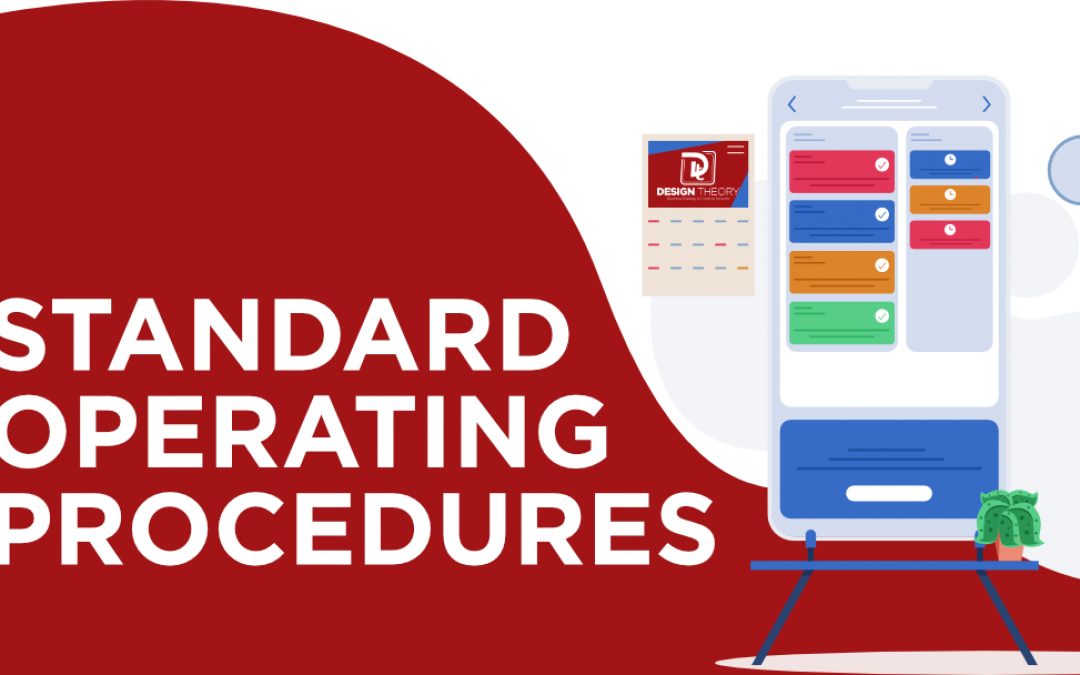
All Posts, Business Strategy
Let’s talk about a game changer that too many business owners overlook; Standard Operating Procedures, or more commonly called SOPs. If you’re rolling your eyes right now, thinking, Ah well that’s just corporate red tape,” hear me out. A well-crafted SOP isn’t about unnecessary paperwork; it’s about efficiency, consistency, and let’s be real, saving you from a never-ending cycle of putting out fires in your business.
Think of an SOP like a great recipe. If a Michelin-starred chef can trust a step-by-step guide to turn out flawless dishes, why wouldn’t you do the same for your business?
1. Stop Reinventing the Wheel. Your Time is Too Valuable
How much time do you spend answering the same questions or fixing the same mistakes? SOPs put an end to that. Instead of explaining to your assistant (for the fifth time) how to handle a refund request, a well-documented SOP lets them follow a proven process—no back-and-forth, no confusion, just results. The more tasks you systematize, the less time you waste micromanaging. And if you ever decide to bring in new employees? They can hit the ground running without needing you to hold their hand.
2. Mistakes Cost Money
Here’s the thing about human error, it can be expensive. A single misstep in invoicing, customer service, or inventory management can cost you big. SOPs reduce mistakes by giving employees clear instructions to follow every single time. No guessing, no improvising, just execution. This isn’t just about saving a few bucks here and there, it’s about preventing major headaches from compliance issues to customer complaints.
3. The Secret to Scaling Without Chaos
You want to grow your business, right? The problem is, growth without structure leads to chaos. Think of a new building for your business and the foundational cement was loose in some areas or non existent. Would you feel comfortable if construction continued and you moved in? A business that runs on SOPs is a business that can scale. Whether you’re opening a second location, hiring more staff, or just expanding your services, your SOPs ensure that everything keeps running smoothly. If you’re relying on memory or tribal knowledge, you’re setting yourself up for a mess. But if you’ve documented your processes? You can duplicate success without duplicating stress.
4. Employees Come and Go. Your Business Shouldn’t Suffer for It
Turnover is inevitable. Don’t get me wrong, it sucks, but you’ve gotta protect the work environment of your business. Without SOPs, every time someone leaves, their knowledge walks right out the door with them. With SOPs, nothing gets lost. Their replacement can pick up where they left off, and your business doesn’t have to slow down while you scramble to fill the gap.
5. Consistency Builds Trust [Internally and Externally]
Customers expect the same experience every time they interact with your business. Employees perform better when they know exactly what’s expected of them. SOPs create that consistency. It’s why McDonald’s can deliver the same Big Mac in New York, Tokyo, or Paris. They don’t leave things up to chance. Everything is documented, trained, and repeatable.
6. SOPs Aren’t Just for Big Corporations
Even if you’re a one-person show, SOPs can help. Future You will be grateful when you don’t have to waste time remembering how you set up that automated email sequence or which exact steps to follow for client onboarding. And when you’re ready to bring on help? Your SOPs turn what would be a painful transition into an easy one.
Closing Theory: SOPs Are the Best Business Insurance You Never Knew You Needed. If you’re serious about saving time, cutting costs, and creating a business that doesn’t depend on you being glued to it 24/7, SOPs are non-negotiable AND they can be updated as tasks and processes are refined. They aren’t about stifling creativity or turning your business into a bureaucratic mess. They’re about freedom—the freedom to focus on growth instead of firefighting, to trust your team instead of micromanaging, and to step away when needed without everything falling apart.

All Posts, Illustrator, Photography, Videography
If you are a small business owner or content creator looking to enhance your photography and videography, investing in the right camera is essential. Whether you are capturing promotional content, product photography, social media videos, or vlogs, the ideal entry-level camera should be affordable, easy to use, and equipped with features like an articulating screen and high-quality video recording.
Because I get asked this often, I figured it would be good to create this short article for what I think are five top entry-level cameras that provide a balance of price, features, and performance. Additionally, I will share my thoughts on my favorite camera brand (Sony) and discuss the professional photography gear I use. Let’s jump into it!
1. Sony ZV-1 – Best Compact Camera for Content Creators
Key Features:
Price: Approximately $750
Sensor: 1-inch Exmor RS CMOS
Lens: Built-in 24-70mm f/1.8-2.8
Video Resolution: 4K at 30fps, 1080p at 120fps
Screen: Fully articulating touchscreen
Stabilization: Optical and digital
Pros: Compact and lightweight, ideal for vlogging and on-the-go creators High-quality 4K video with excellent autofocus tracking Flip-out screen for easy selfie recording Built-in ND filter for better exposure in bright environments High-quality built-in microphone with windscreen
Cons: Fixed lens with no option to swap lenses No headphone jack for audio monitoring Limited battery life
Theory on who’s this best for: Vloggers and social media influencers Small business owners who need quick, high-quality content Creators looking for a simple, all-in-one solution
2. Canon EOS R50 – Best Budget Mirrorless Camera
Key Features:
Price: Approximately $800 with kit lens
Sensor: APS-C 24.2MP
Lens Mount: RF-mount
Video Resolution: 4K at 30fps (oversampled), 1080p at 120fps
Screen: Vari-angle LCD touchscreen
Stabilization: Digital IS
Pros: Affordable mirrorless option with interchangeable lenses Compact and lightweight design Excellent autofocus with subject tracking Great color science for skin tones
Cons: No in-body stabilization (IBIS) 4K video has a crop factor RF lenses can be expensive
Theory on who’s this best for: Entrepreneurs seeking professional image quality YouTube content creators Product photographers
3. Nikon Z30 – Best for Beginner Video Creators
Key Features:
Price: Approximately $700 (body only)
Sensor: APS-C 20.9MP
Lens Mount: Nikon Z-mount
Video Resolution: 4K at 30fps, 1080p at 120fps
Screen: Flip-out LCD touchscreen
Stabilization: Electronic VR
Pros: No recording limit for 4K videos Compact body with interchangeable lens options Excellent low-light performance Easy-to-use controls
Cons: No in-body image stabilization No viewfinder, LCD-only operation
Theory on who’s this best for: Business owners focused on YouTube content Creators prioritizing video over photography Beginners looking to grow into the Nikon Z system
4. Fujifilm X-S10 – Best Hybrid Photo & Video Camera
Key Features:
Price: Approximately $1,000 with kit lens
Sensor: APS-C 26.1MP X-Trans
Lens Mount: Fujifilm X-mount
Video Resolution: 4K at 30fps, 1080p at 240fps
Screen: Fully articulating touchscreen
Stabilization: 5-axis IBIS
Pros: Excellent film simulation modes for a unique look In-body stabilization for smoother video High-resolution sensor with great dynamic range Compact and stylish design
Cons: More expensive than other entry-level cameras Autofocus is not as fast as Sony or Canon
Theory on who’s this best for: Small business owners needing high-quality product photography Creators who value aesthetics and unique film-like color profiles Hybrid shooters using both photo and video
4. Panasonic Lumix G100 – Best for YouTube and Live Streaming
Key Features:
Price: Approximately $650 with kit lens
Sensor: Micro Four Thirds 20.3MP
Lens Mount: Micro Four Thirds
Video Resolution: 4K at 30fps, 1080p at 120fps
Screen: Fully articulating touchscreen
Stabilization: Hybrid IS
Pros: Compact and lightweight High-quality built-in microphone with audio tracking Flip-out screen for easy vlogging Wide lens selection for an entry-level camera
Cons: Smaller sensor size affects low-light performance No in-body stabilization for 4K video
Theory on who’s this best for: Business owners needing a streaming-friendly camera YouTubers prioritizing audio quality Travel vloggers
Why Sony Is My Favorite Camera Brand
As a Professional Photographer and Videographer , I rely on Sony cameras and lenses because of their fast autofocus, superior image quality, and versatility. I didn’t start off my career with Sony though. Nikon was the brand I started out with and is where I really deepened my passion for capturing great images. While I don’t use that camera setup anymore, it’ll always have a soft spot in my heart. Check out the gear I use for my work:
My Camera Bodies: Sony A7S III – My primary camera for high-end video production Sony A7 III – A versatile camera suitable for both photography and video
My Lenses: Sony FE 24-105mm f/4 G – A versatile lens for various shooting conditions Tamron 70-300mm f/4-5.6 – A budget-friendly telephoto lens Sony FE 16-35mm f/2.8 G-Master – Ideal for wide-angle shots Zeiss 35mm f/1.4 – Perfect for portraits and low-light photography
Sony’s autofocus system, color science, and low-light performance make their cameras an excellent choice for both professionals and beginners. The low-light performance is really what I had kept seeing so much favor for with all of the creators I follow like Ty Turner, Chris Hau, and others. I’m going to level with you, choosing the right camera really depends on your specific needs. If you can rent or borrow one or two different cameras from a friend or colleague for a week or so, that would really give you some hands on insight and a good feel for if you will like using it yourself.
None of these are dirt cheap options, and they shouldn’t be. You are investing in great quality to produce great quality. When it comes time for upgrading your camera gear because you have reached specific limitations, you’ll know and know what exactly new gear you’ll need. If you need a compact, high-quality camera, the Sony ZV-1 is an excellent choice. For those looking for an affordable mirrorless camera, the Canon EOS R50 is a great option. If video is your primary focus, the Nikon Z30 and Fujifilm X-S10 offer strong hybrid capabilities. Let me know what you choose, I’m curious.

All Posts, How to, WordPress
Time is a precious resource for every business professional. What if your website could manage content publishing for you while you focus on running your business? With WordPress, scheduling posts and pages is a powerful feature you can easily leverage to streamline your workflow and maintain consistency with your audience. This quick guide will explain why this feature is a must-have, share real-world examples, and provide step-by-step instructions to help you master it right now.
Staying consistent with your content is critical for engaging your audience, driving traffic, and improving your website’s SEO. But busy schedules often mean missed opportunities to post on time. WordPress solves this problem with its scheduling tool, allowing you to plan and automate your content strategy. Some of the key benefits are:
- Save yourself time by no longer needing to manually post at odd hours
- Get consistent and keep your audience engaged with regular updates/publishing
- Spend more time creating quality content and less time worrying about publishing logistics
-
Theory Scenarios
- Fitness Blog Weekly Updates: Sarah, a fitness coach, publishes her “Workout of the Week” every Monday at 6 AM. Instead of waking up early, she schedules her post in advance, ensuring her audience gets the content as promised.
- E-commerce Promotions: John, an online retailer, schedules pages and product updates to coincide with the launch of holiday discounts. This ensures his site aligns perfectly with his marketing campaigns.
How to Schedule Pages and Posts in WordPress
Follow these simple steps to schedule your content on your WordPress website:
1.Log In to Your WordPress Dashboard
Navigate to your WordPress site and log in using your credentials.
2.Create or Edit a Post/Page
Start a new post or page or edit an existing draft.
3.Locate the “Publish” Settings
In the right-hand sidebar of the WordPress editor, find the “Publish” section.
4.Set a Future Date and Time
•Click the date field.
•Use the calendar to select your desired publish date.
•Set the time in 24-hour format (e.g., 14:00 for 2 PM).
5.Click “Schedule”
Once you’ve confirmed the date and time, click the “Schedule” button. WordPress will now handle publishing for you.




